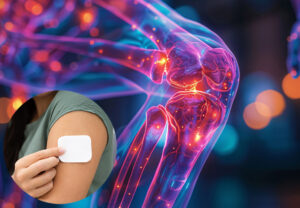
If This Were a “Bone Health Supplement,” it Would Go Viral on Social Media
Recent evidence shows insufficient public knowledge about osteoporosis prevention practices.
Imagine this headline: Science Discovers a Supplement that Can…
- Slow bone loss and help prevent fractures – one of the leading causes of independence and disability in older women!
- Work quietly and effectively, restoring the bone-protective benefits of estrogen that fade at midlife!
- Avoid stimulating the breast or uterus – the two tissues that have historically raised concern about hormone therapy!
- And it’s delivered in the simplest way imaginable: a tiny once-weekly skin patch!
Now ask yourself…
If such a product existed, wouldn’t there be a national campaign urging every woman to discuss it with her clinician?
Wouldn’t we see it heralded as a miracle addition to calcium and vitamin D at the pharmacy — promoted as a must for bone health?
Guess what? It Already Exists!
It’s Called a 14 Microgram Estradiol Patch.
This “ultra-low-dose” patch (brand name Menostar) delivers just enough natural estrogen (17-beta Estradiol)—14 micrograms per day—to preserve bone without overstimulating breast or endometrial tissue.
Clinical trials in women aged 60–80 showed:
- Stronger bones and reduced bone turnover chemical markers.
- No significant stimulation of the breast or uterus over two years (only one case of mild endometrial thickening among more than 200 participants).
- No endometrial cancers reported in that study.
It’s not a complete hormone replacement — but it’s a powerful starting point—a bridge between doing nothing and full-dose therapy.
What the Evidence Really Means
Scientists describe this 14 µg/day patch as a “minimally effective bone-preserving dose.”
It’s low enough to avoid the classic estrogen side effects — but high enough to help slow the silent epidemic of postmenopausal bone loss.
Still, it’s not “risk-free.”
- The studies were small and short (two years), so regular breast and uterine monitoring is advised.
- But when compared with the health costs of fractures, frailty, and loss of independence, this low-dose approach looks like a missed public health opportunity.
A Call to Rethink “Hormone Fear”
If this were a plant extract or a “natural supplement” proven to save women’s bones and independence…
- Social media would be flooding us with it.
- Wellness fairs and centers would tout their importance.
- Public health officials would be celebrating it as a breakthrough in women’s preventive health.
Instead, because it’s called “estrogen,” it’s often dismissed before the conversation even begins.
A Thought to Take to Your Clinician
“If 14 micrograms a day of natural 17-beta estradiol can help protect my bones without overstimulating breast or uterine tissue, can we at least talk about it – as a first step?”
For many women, the question isn’t “Should I take hormones?”
It’s “What’s the lowest effective dose that protects my future health?”
The 14 microgram estradiol patch might be it!
For more insight into the 14-microgram patch from NIH, see:
For more insight into the 14-microgram patch from NIH, see:
As always, we are here to educate and advocate on behalf of adolescent girls and women with Primary Ovarian Insufficiency. We do not provide medical advice. It is essential to discuss these issues with your clinician, who knows your specific situation.




